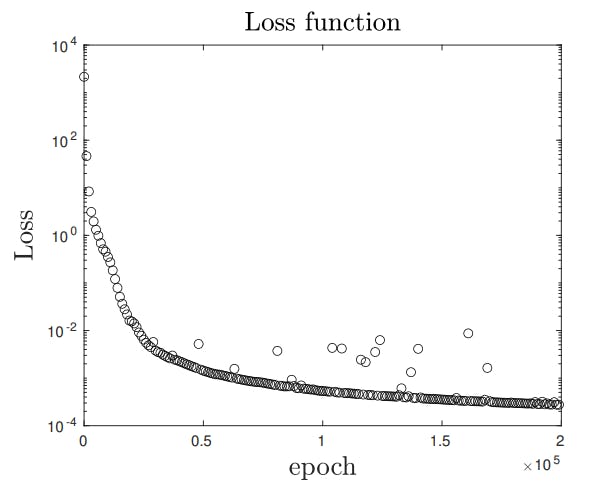Financial services are at a crossroads. The industry is shifting from tradition to innovation, so that many organizations reconsider the way they make contact with customers. But many leaders, especially with larger organizations, respond slowly to the rapidly evolving landscape.
The 2025 Financial services Customer Engagement Review Braze and Wakefield Research show that many brands for financial services measure the success of their customer involvement on the basis of statistics such as product acceptance. When leaders of financial services were asked to state the most important measure of success for customer involvement, 37% said that the production of product, nine points higher than average in all industries surveyed.
However, consumers give more than just new products. They want to notice that they can trust, can sound financial advice and communication so that they show and heard as individuals as individuals.
Product acceptance is a crucial business purpose for financial marketers, but not what consumers care about. Institutions cannot achieve their objectives if they do not involve customers on an individual level and offer support, care and guidance they need in an often rapidly changing economy. The brands that remain agile and meet these needs can succeed where more traditional strategies can ultimately ensure that brands lose valuable customers.
The evolving landscape of the expectations of the customer
Today’s consumers want to be treated as individuals, but their actual experiences often fall short. For many years, these frustrated customers remained the tendency to stay where they were, given the difficulties in switching their accounts to a new brand for financial services. Customer loyalty was driven by apathy and a lack of achievable alternatives.
That is no longer the case. Fintech startups have removed many of the barriers that have locked consumers where they were. Easily download an app, enter a few details and you are completely ready to deposit your salary or make purchases on your credit card. The result? Dissatisfied customers can leave quickly and just for better financial experience.
Loyalty is eroding, especially in younger generations. More than half of Millennials and Gen Z -Consumers are willing to change banks, partly due to impersonal services. During generations, consumers believe that banks should work for their unique financial success. More than 75% of consumers Will change banks if they find an alternative brand that meets their specific needs.
Brands have slowly adapted to the new reality. When braze marketing leaders in the financial sector investigated, Only 29% ranked retention As an important marker for the success of customer involvement.
The brands that double efforts to maintain customers through involvement and personalized experiences will win on two fronts – get more customers while attracting consumers who are dissatisfied with their current banking experience.
Bridging the gap between brands and customers
Financial services marketers have a wealth of information about their customers. However, raw data is not necessarily the same as ‘knowing your customers’. Braze discovered that 66% of the leaders of financial services believe that they are usually or fully confidence in their understanding of customer sentiment and preferences with regard to their brand. Many even believe that data from third parties, who only offer a small window in the motivations of customers, is a sufficient way to understand the intention.
But whether brands use their data to involve customers is a different question and customers tell a different story. More than 90% of consumers Ask financial advice from sources other than their banks. Moreover alone 33% of consumers The feeling that their bank is doing enough to support their financial needs.
Meet the exact needs of modern consumers
Financial brands are losing the risk of falling into the eyes of their customers. Modern consumers expect robust personalization, engagement strategies that give priority to their unique needs and tailor -made communication on their preferences.
New fintech startups arrive by strategically investing in involvement and personalization, so that marketers can meet customers with the right message on their preferred platform, with content and messages that resonate at an individual level.
While in Bankaitis, director, marketing for financial services at BREZE, it is noted: “Fintechs sets the bar on involvement and personalization, and the longer Legacy institutions wait to catch up, the greater the risk that they will stay behind. Customers expect all this high -made experience – and soon it will not be different, it will be the Baseline.”
Travel based on customers, no products
Financial decisions are emotional and deeply personal. Although institutions can convey strength and reliability, they can find it a challenge to make contact with customers on an emotional level. A way to start is to build a customer journey that demonstrates a concept of the needs, preferences and behavior of customers, delivering the right message at the right time. This includes the use of customer data to interpret digital signals and to make a story based on customer interactions.
Brands often send marketing messages that are aimed at the actions they want customers to take. Coordinating messages to individuals – emphasizing that emphasizing the next best interaction, not necessarily the next best action – can show more careful attention to their unique needs. None of this is feasible on a personal level without the right technology to provide electricity strategies with power. Marketers will have to carry out a well -considered inventory of their technical stack and give priority to the technology that can facilitate emotional connections in practice.
How brands can develop their strategies for customer involvement
Only 41% of the financial institutions Personalize messages based on real-time involvement, the lowest of all industries investigated by Braze for the Global Customer Engagement Review 2025. Transition to a more customer-oriented marketing strategy-one that offers messages based on customer brushes, clicks and weather-can-can brands to reach short-term scoring rates. To achieve this, financial institutions must read and act on digital body language – or how customers reveal their true themselves to brands online – far -reaching messages that matter and pop up with products that are tailored to the goals or phases of customers.
A young professional who lives in New York City has several financial incentives than a parent who is worried about sending university to university soon. Both customers probably communicate their financial ambitions with their financial institutions.
For example, the Young Professional saves for a trip to Paris with friends, while the parents want advice on how they can save for tuition fees. With the right technology and life cycle strategy, marketers can interpret the body language of each customer, assess their needs and send personalized marketing messages that stimulate action.
The next generation of customer focus
Artificial intelligence can help marketers move on to the next level of 1: 1 personalization. Given the enormous amount of data on data on the financial services of data, marketers can quickly integrate AI decision into their life cycle campaigns. AI decision acts as the brain that lies on top of the technical stack of a brand and learns how they can personalize every aspect of a campaign based on individualized profiles that AI builds, analyzes and learns. This enables marketers to scale up personalization about millions of customers, data points, messages and interactions.
When starting with AI decision, select a business metric that they want the model to maximize. The model then starts experimenting with the right message, channel, offer, timing and more. Through these experiments, the model learns and helps customers through a journey that maximizes business measure.
A large North American bank used AI decision to optimize the references of the business credit cards. By adjusting each aspect of the campaign to customers based on unique customer profiles, the organization increased the conversion rate of the campaign by 92% compared to the traditional approach.
Financial services made marketing made personally
Because retention is becoming an increasing focus in this new environment, Finnier-Marketers can impose a basis of customer focus throughout the life cycle. By adopting new strategies for customer involvement and state-of-the-art marketing technology, marketers can use the data and knowledge of the customer they have to deepen the relationships and increase the life of the customer.









